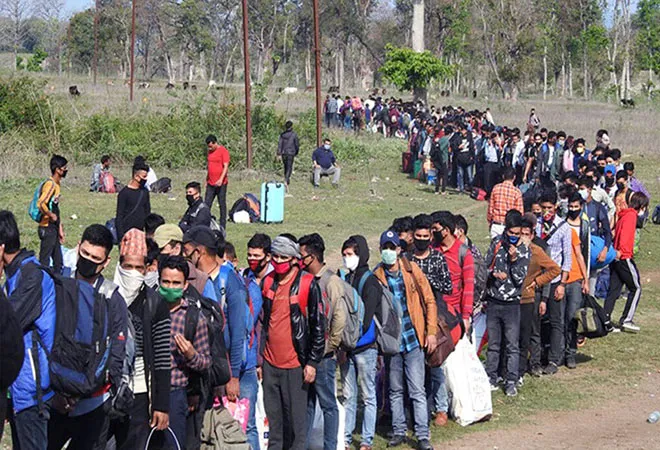-
CENTRES
Progammes & Centres
Location

In a bid to control the COVID-19 infections, Nepal and India have increased the deployment of security personnel along their shared border to check the cross movement of people from one country to the other. With the entire stretch of 1753-kilometre border remaining closed, the social, cultural and economic life of the two countries has been severely affected. Never in the history of both countries has the border been closed for such a long time.
Restrictions on the cross-movement of people through the Nepal-India border have not been eased despite India lifting its nationwide lockdown on 8 June and Nepal partially lifting its shutdown on 21 July.
Unexpectedly, COVID-19 has changed the entire gamut of ties between inhabitants of the border area since the lockdowns were introduced. The market centres all along the Nepal-India border regions ran dry, further exacerbating the miseries of the border inhabitants without access to each other’s market.
However, the purpose for which the Nepal-India border was closed does not seem to have had the desired outcome. Even in the absence of the cross-border movement of people, the number of COVID-19 cases continues to grow in both countries. As of 14 September, Nepal, with a population of 30 million, has recorded over 55,329 coronavirus cases and 360 fatalities, while India, with a 1.3-billion population, has 4.93 million coronavirus cases and about 81,000 deaths. Until 24 March, when Nepal introduced its lockdown, the country had reported only two deaths due to COVID-19, while India had 10 fatalities and 500 cases.
Amidst the rising number of COVID-19 cases in Nepal, the government designated ten border points between the two countries for the movement of people. But this was only allowed for those Nepalese who needed to return from India.
Presently, the trade of essential items between Nepal and India is allowed only through the designated custom points. The informal trade that runs on a far larger scale by the border inhabitants of the two countries has practically come to a halt. Since the border inhabitants mostly carry essential items for their personal use from one side of the border to the other, they have been experiencing a great hardship.
This has never happened in the history of Nepal and India. Until the Anglo-Nepal War of 1814, Nepal did not have any defined border with India, and there were no restrictions on the movement of people from one country to the other. It was only after the Treaty of Sugauli in 1815 and its ratification in 1816 by Nepal and the East India Company that the border was demarcated.
It was not without reason that the Nepal-India border was kept open for the movement of people from both countries. Except for the Mechi river in the east and the Mahakali river in the west, there is no natural boundary in any other part of the two countries. Given this geographical factor, it is almost impossible to restrict the movement of people from one country to the other. Also, after the Sugauli Treaty, any curb on the movement of people from one side of the border to the other would have likely been met with opposition from the border inhabitants, given their strong social, cultural, religious and economic bonds.
In the past, Nepal’s policymakers have remained passive on the development of the border region with India. India has also not paid enough attention to the issue. But in a major shift in policy, India has over the last few years focused on developing infrastructural facilities like roads and railways in the border regions, and to establish further points of connectivity.
Given the open border between the two countries, development activities on the Indian side will benefit the Nepalese border inhabitants and vice versa.
The open border system between Nepal and India has proved a boon for the citizens of the two countries as they easily cross the border each day for business, trade, religious and tourist activities, and other purposes. Significantly, the Haat bazaars, market centres and townships in the border regions provide ample opportunities to the border inhabitants of each country to buy goods of their daily needs. To facilitate such informal trade, the currencies of both countries are accepted at these areas.
The rising number of cases in both countries despite the closure of the border shows that active cooperation through health facilities is the best solution to the COVID-19 problem. Given the difficulties faced by the common people in general and the border inhabitants in particular, India and Nepal must reopen the border soon.
The views expressed above belong to the author(s). ORF research and analyses now available on Telegram! Click here to access our curated content — blogs, longforms and interviews.

Hari Bansh Jha was a Visiting Fellow at ORF. Formerly a professor of economics at Nepal's Tribhuvan University, Hari Bansh’s areas of interest include, Nepal-China-India strategic ...
Read More +